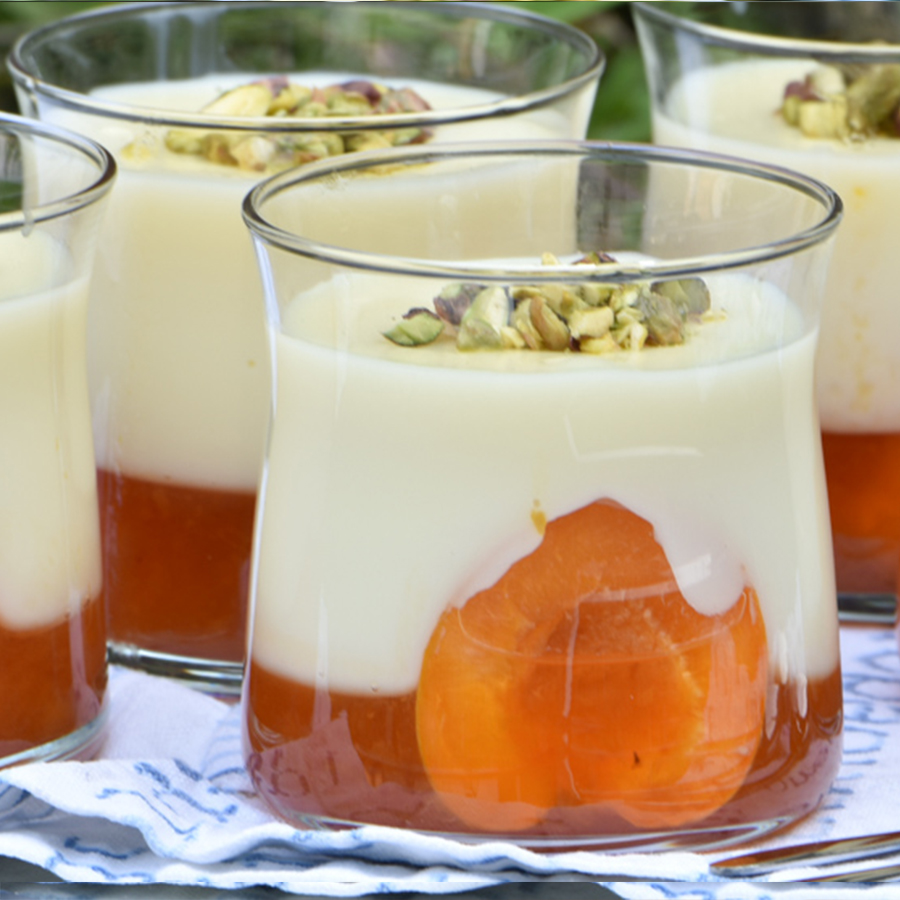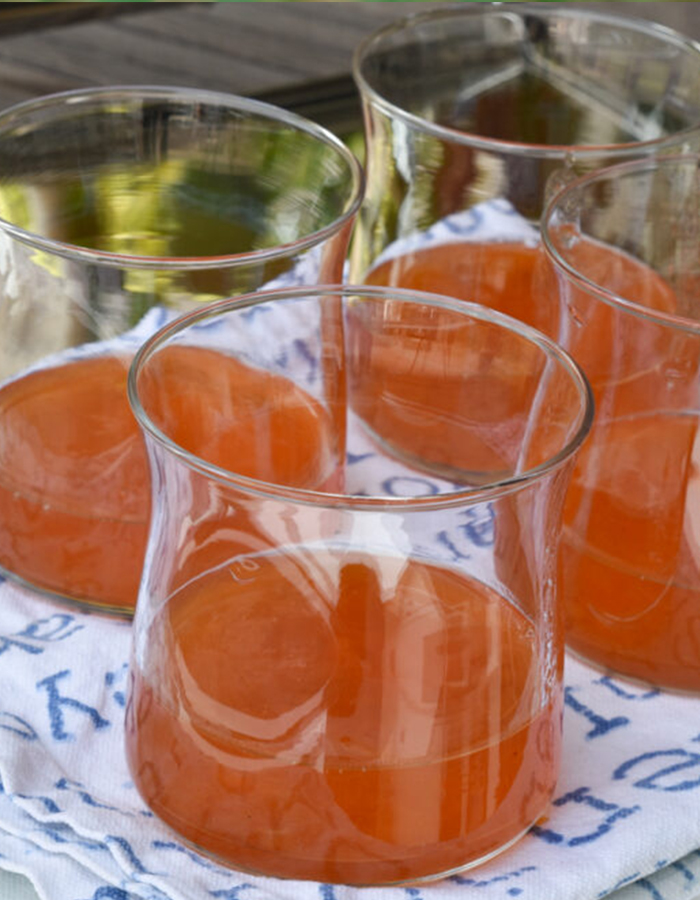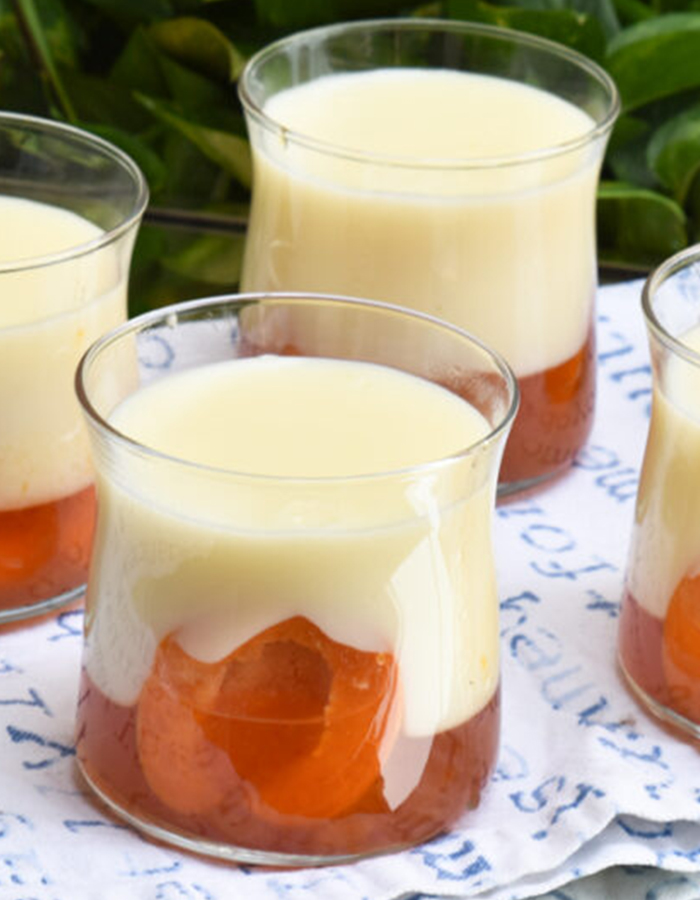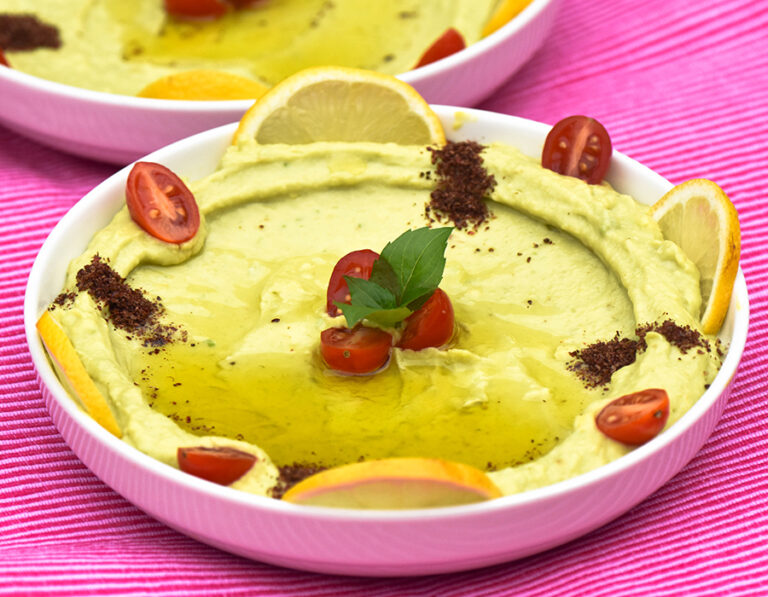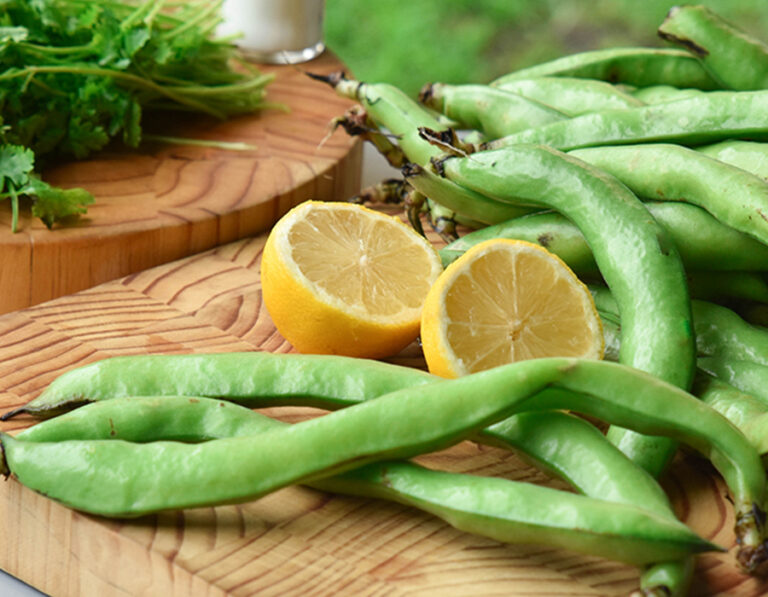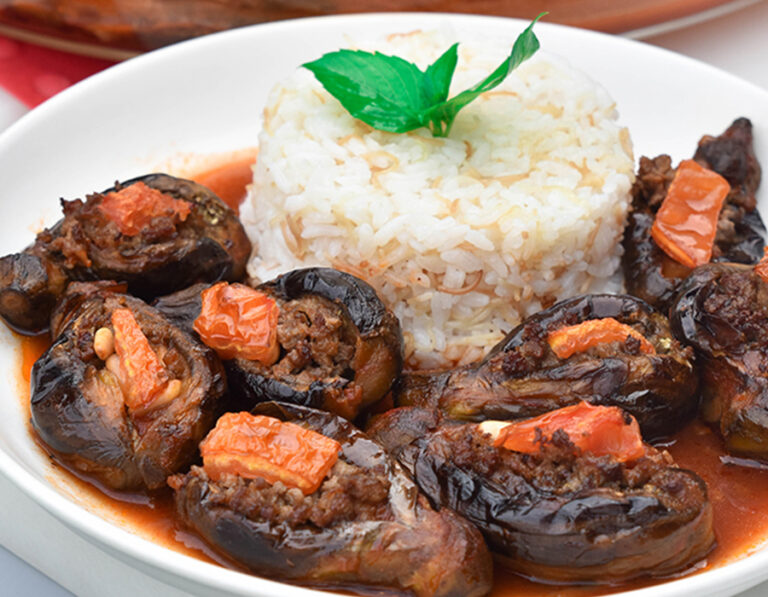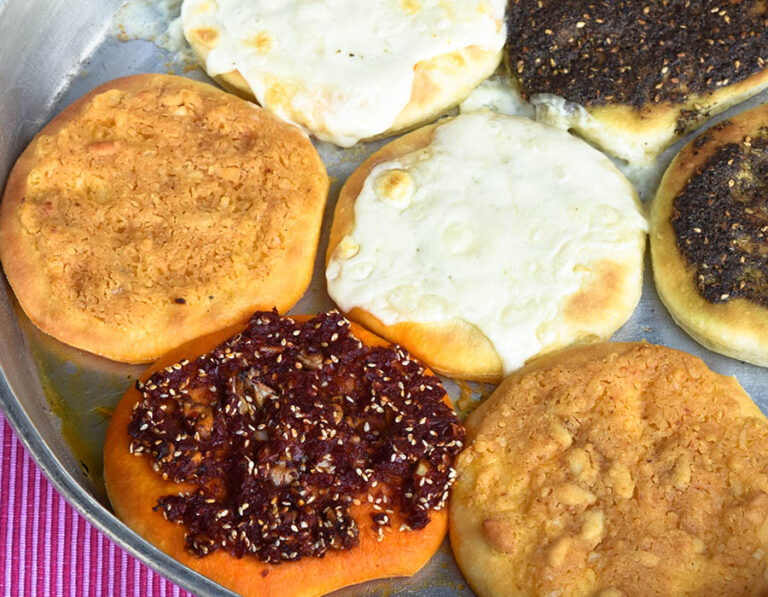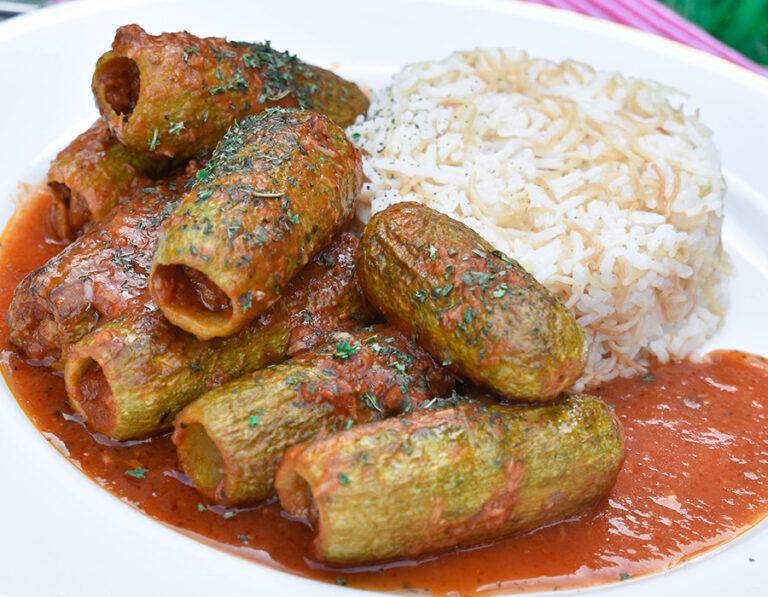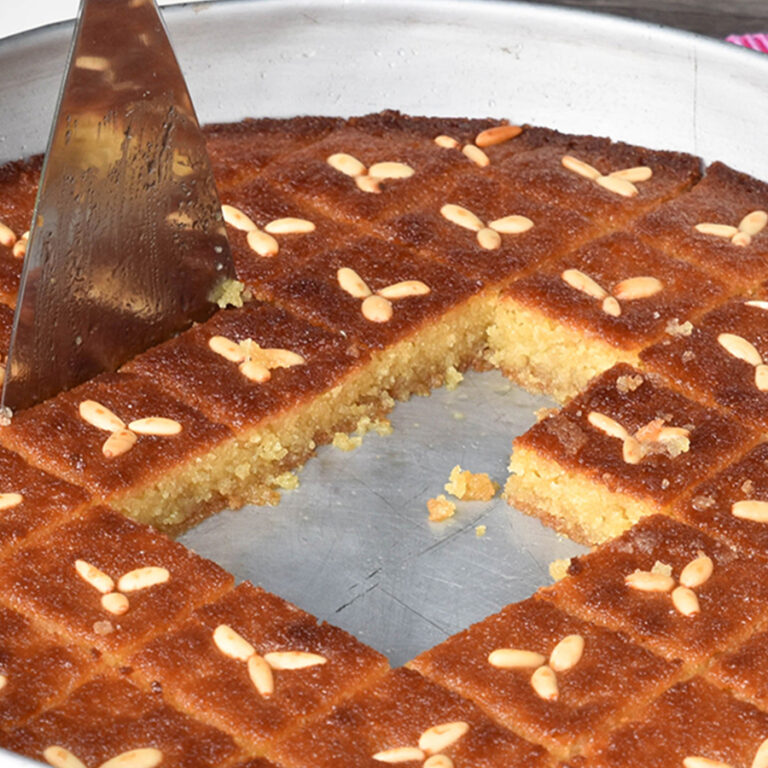Food trends come and go, but muhallabia is forever! Lush but light, Mouhallabia is a classic creamy stovetop milk pudding from Lebanon and the Middle East. It is egg-free and gelatin-free, takes a few minutes to cook and has been enjoyed across the Middle East for centuries; it has very ancient origins and believed that its roots stretch back to the early Persian cuisine. You’ll likely notice that it written as “Muhallabia”,”Muhallabi”, “Malabi”, “Muhalabeya” “Mehalabeya”, and perhaps more to be added to the list!

Muhallabia with Apricot Coulis on-the-Bottom
If you are looking for a dessert that’s affordable and cooks in a reasonable amount of time; with easy-to-find ingredients, then muhallabia is that pudding you should consider learning. Serve it for a casual dinner or a celebratory event. At first sight, the pudding looks too simple for a festive dessert, but don’t let it fool you — those ingredients come together in a flavorful and sublime milk pudding — the creamy dessert is cooling and comforting.
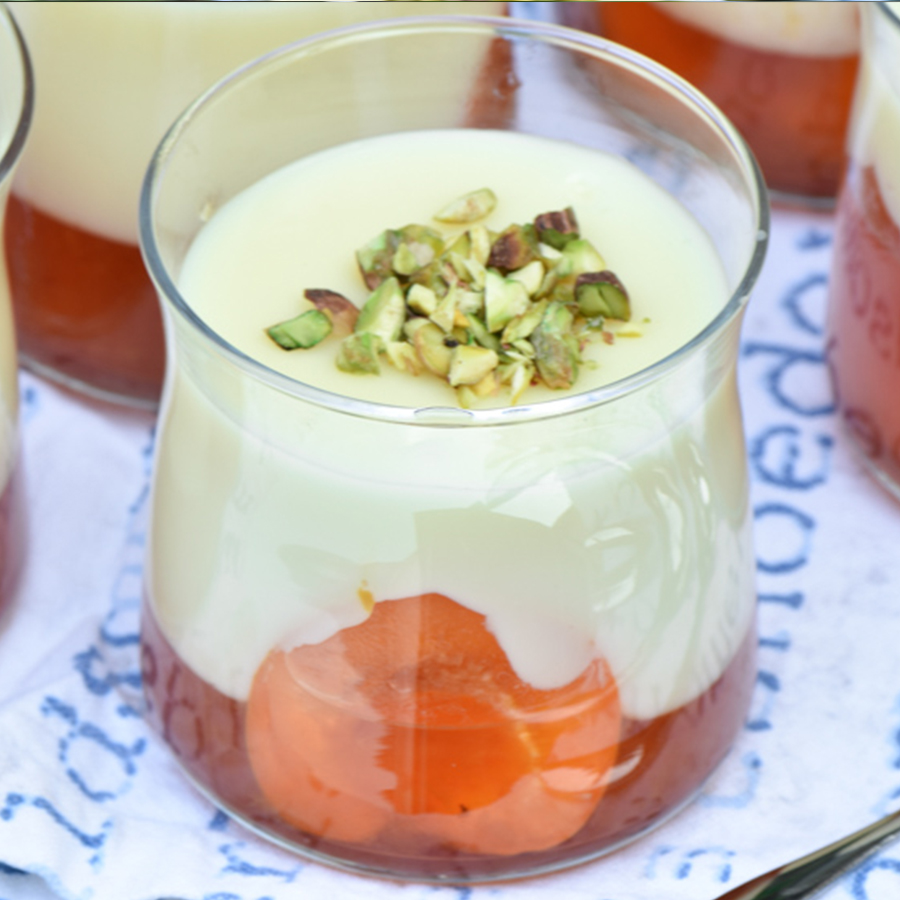
Muhallabia is made largely from pantry staples, it is easy to scale up and can be kept in the fridge for a few days. Back in the old days, folks in the Middle East used to make muhallabia from fresh cow milk, but since this is not the case in our modern world, I recommend combining together whole milk and heavy cream when making this majestic milk pudding. The texture and flavors are best when marrying both together.

Most Lebanese and Middle Eastern households make this dessert. as the ingredients are easily accessible and found in every kitchen pantry. Once you make this recipe, you will want to make it over and over again.

Muhallabia in Lebanon is usually served perfectly on its own, with no fruits, but with a variety of nuts, including pine nuts, shaved almonds and skinned pistachios. The deep flavor notes in the pudding comes from a winning combination of mastic gum and orange blossom water.

I was ultimately inspired to create this fruity apricot bottom coulis —the one I had wished for all along, and kept postponing until a few days. Here the coulis is made from apricot jello, apricot, jam, water and perfumed with orange blossom water, it sits nicely underneath, creating an attractive and quintessential contrast of colors, as if they were meant to be together with all those subtle and bright flavor notes— my apricot muhallabia come true.
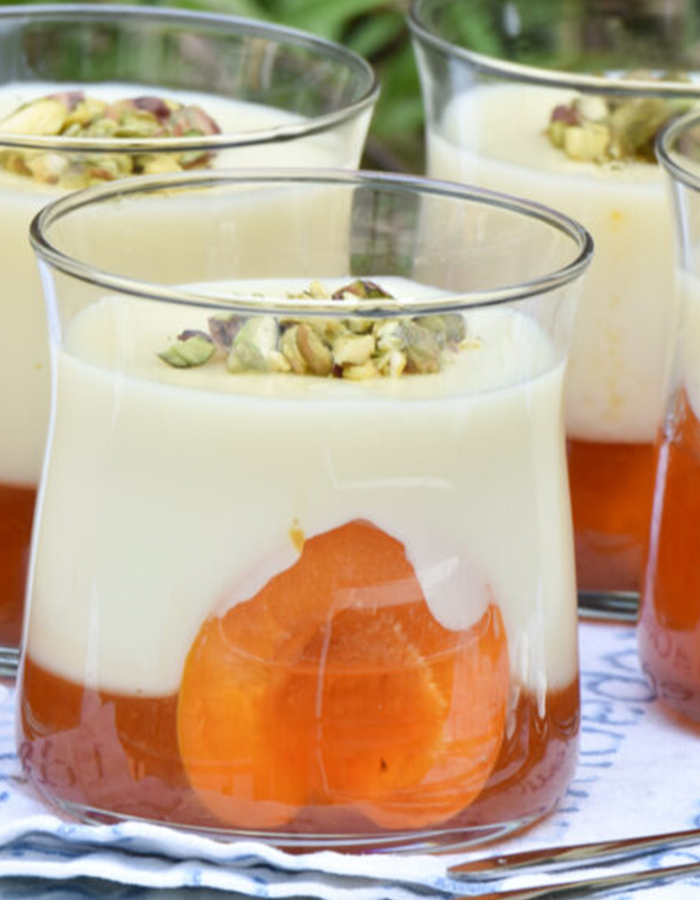
Tip and Tricks:
- Although most people enjoy muhallabieh as it is, it is always possible to add a layer of fruits to the dessert with some delicious additions. Just like the recipe we will show you today. This creamy pudding and the apricot jammy bottom texture are a nice contrast.
- Back in the old days, folks in the Middle East used to make muhallabia from fresh cow milk, but since this is not the case in our modern world, I recommend combining together whole milk and heavy cream when making muhallabia. The texture and flavor is best when marrying both together.
- Muhallabia is endlessly customizable, you can serve it on its own with some pine nuts, blanched almonds and pistachios or with a variety of fruit flavors!
- Mastic gum adds an amazing dimension to the muhallabia, and a few drops of orange blossom water add an agreeable floral taste.
- The muhallabia will form a skin after it has been chilled, but that is how it served.
- The muhallabia needs to be chilled for 3 to 4 hours before serving, and can be refrigerated for up to 5 days.
- I recommend you dice the apricots for better coherence. I kept them large chunks for more photogenic photos, but after testing both, I prefered the diced version.
- If apricots are not in season, you can use tinned apricots.
- You can play around and substitute apricots for any stone fruit, including peaches, plums, cherries, nectarines and mangoes.
- You can even make a berry coulis with some fresh berries, including raspberries, blueberries, strawberries or blackberries.
- Apricots and pistachios are a winning combination, garnish the muhallabia glasses with some chopped pistachios, they add color and flavor.
- The recipe feeds a large number of people, I ended up with 9 large glasses, each glass is capacity of 350 ml, you can make more if using smaller glasses.
- Freezing is not recommended as the muhallabieh might change texture once thawed.
- Muhallabia alongside Ashtalieh are great make ahead effortless puddings to host a crowd of people.
Orange blossom water or rose water in Muhallabia?
Orange blossom water and rose water are the two most floral extracts that are widely consumed in Lebanese and Middle Eastern desserts, both act as flavor enhancers, yet both have their unique flavor profile. Orange blossom water is distilled from the macerated blossom flowers of Seville oranges, while rose water is distilled from macerated fresh wild roses. If you are asking about my personal preference in muhallabia, I would definitely go for orange blossom water as I love its mild citrusy scent; rose water is a bit punchy for me in muhallabia. But finally, it is a matter of personal preference.
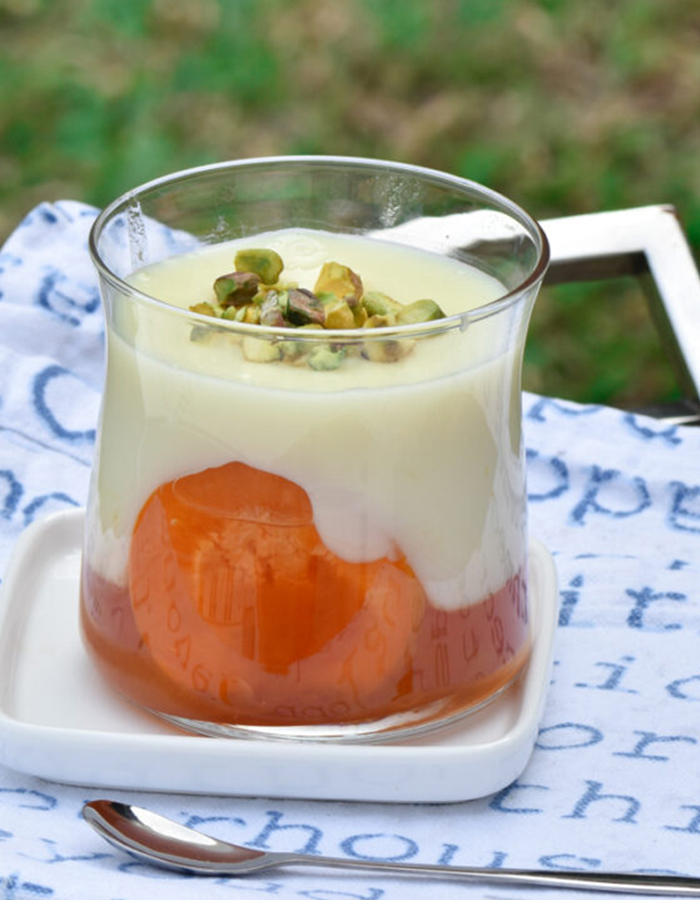
Ingredients needed to make Muhallabia
- Whole milk: is the only good choice when you’re making muhallabia, it carries more flavor.
- Heavy cream: for a richer flavor
- Sugar: use granulated sugar
- Mastic gum: is the dried resin that steeps through the bark of the Pistacia lentiscus, a tree native to the Mediterranean. It comes small crystalline granules that are crushed and added to sweets, mastic is an amazing flavor enhancer.
- Cornstarch: the thickening agent in muhallabia
- Orange blossom water: adds a floral citrusy scent and taste
- Apricots: to decorate around each glass
- Raw pistachios: add a lovely nutty flavor
- Apricot jam: to make the bottom fruity coulis
- Apricot/ peach/ mango jello to thicken the bottom fruity coulis
- Water: to make the culis.
Spoon into this lovely muhalabia and discover a layer of luscious fruity glaze beneath the milk pudding! It’s quick and easy enough to make anytime of the week, yet a decadent treat to break out on the fanciest of occasions — perfect to get ahead for dinner parties or entertaining.
Hungry for more puddings?
Muhallabia with Apricot Coulis on-the-Bottom
Description
Ingredients
For the milk pudding
- 6 cups / 1.5 liters whole milk
- 1 cup / 250 ml heavy cream
- 1 1/2 cups granulated sugar
- 1/ 4 teaspoon mastic gum crushed with a small pinch of sugar, optional, but recommended
- 9 tablespoons cornstarch dissolved in 1/2 cup water
- 1 tablespoon orange blossom water
For the bottom apricot coulis:
- 7 tablespoons hot water
- 8 tablespoons apricot jam
- 6 tablespoons of apricot or peach jello
- 1 teaspoon orange blossom water
- 5 fresh apricots diced, or alternatively you can use tinned apricots, I recommend you dice the apricots for better coherence. I kept them large chunks for more photogenic photos, but after testing both, I prefered the diced version.
For the topping:
- A handful of shelled raw pistachios roughly chopped with a knife
Instructions
- For the bottom apricot coulis, mix together the jello, water, apricot jam and orange blossom water Strain the glaze with a mesh strainer.
- Divide the apricot glaze among serving glasses, covering 1/4 of the glass.
- Slice a few apricots in half and place 2 pieces around the edge of every glass.
- Divide the apricot glaze among serving glasses, covering 1/4 of the glass. Add the diced apricots and refrigerate for 15 minutes to help the apricot coulis set up a bit.
- To make the pudding: Crush the mastic gum if used with a mortar and pestle.
- Place the milk, sugar and dissolved cornstarch in a large stockpot over medium heat.
- While whisking bring to a boil, then reduce the heat to low, and continue whisking for a few seconds. Don’t over boil, othewise the cornstarch may lose its thickening power and effectiveness.
- The mixture at this stage should have the consistency of custard. Note that it will thicken more upon cooling. Add the crushed mastic and orange blossom water and give a quick stir.
- Remove from heat and gently spoon into the ramekins, fully covering the apricot on the bottom. Set aside to completely cool down.
- Cover the ramekins with plastic wrap and chill for at least 4 hours.
- Garnish with some crushed pistachios.
Notes


